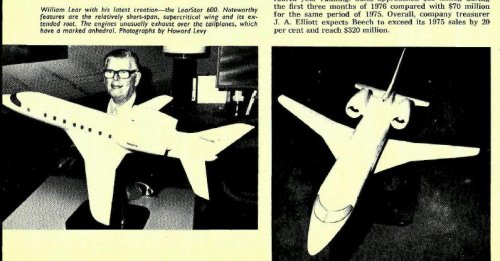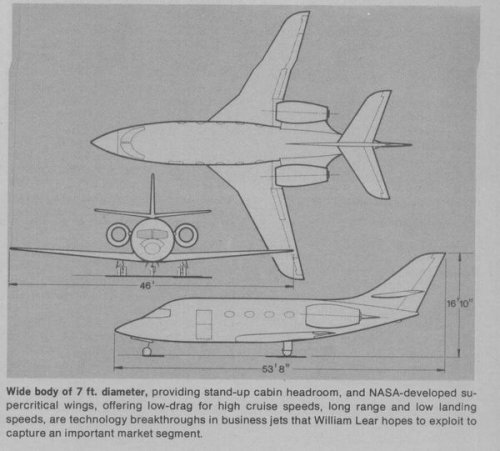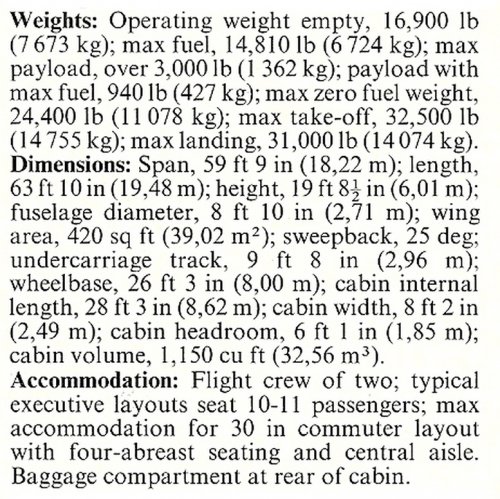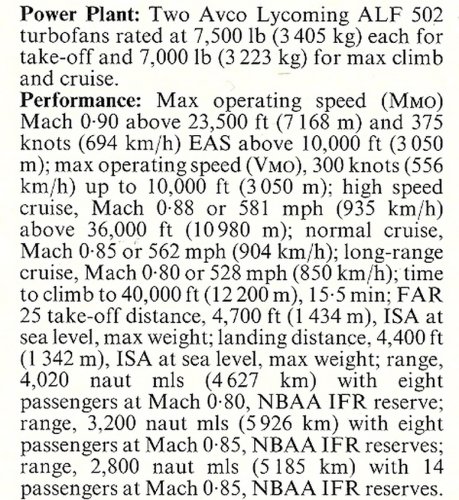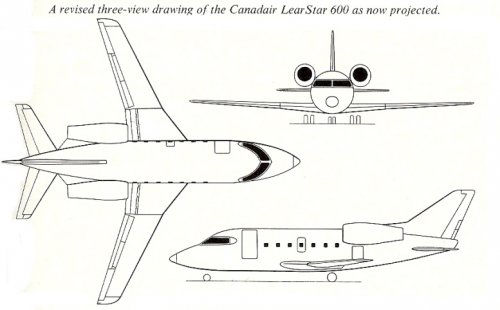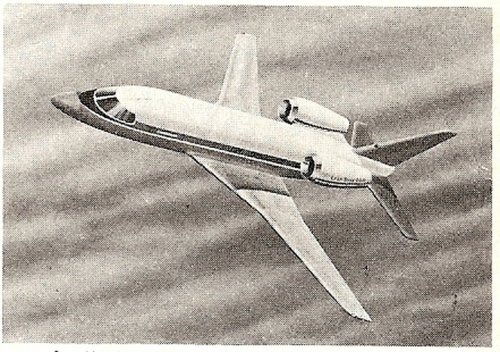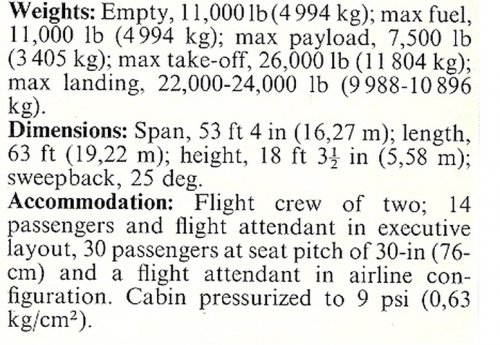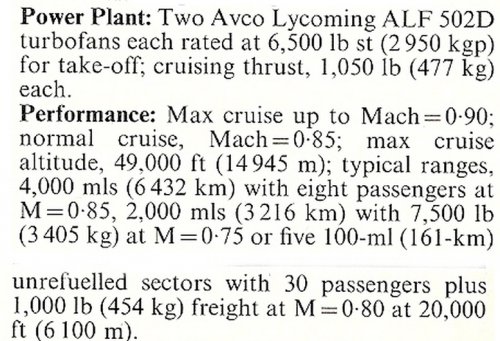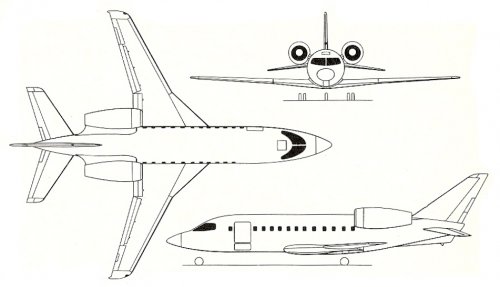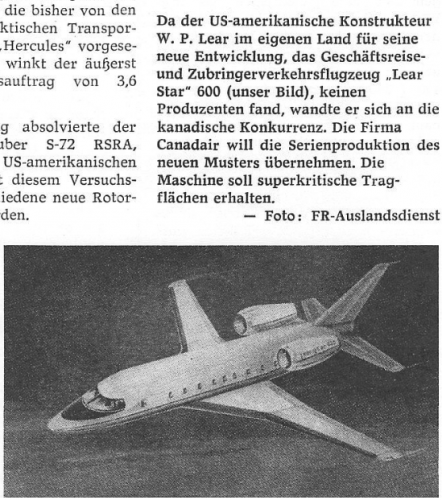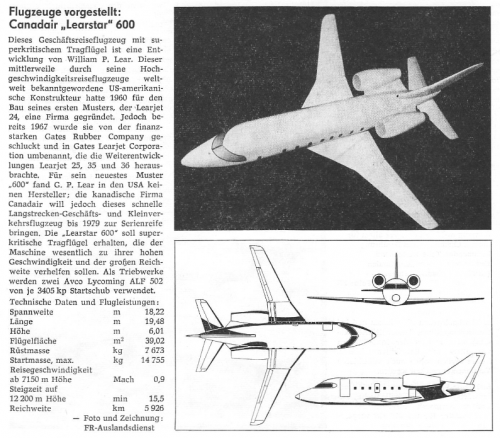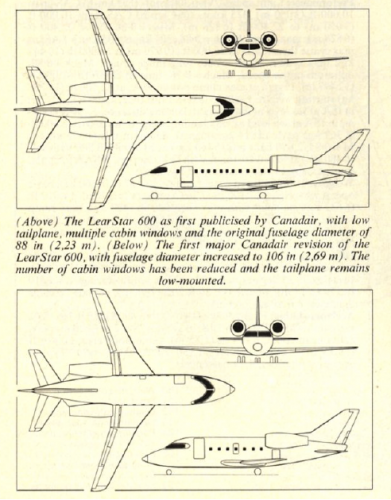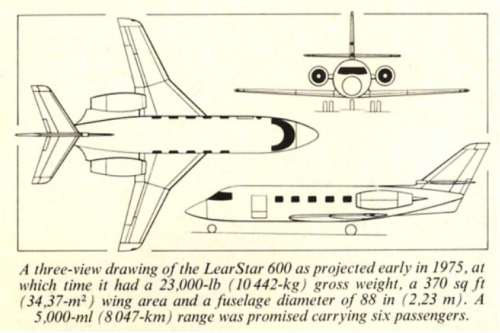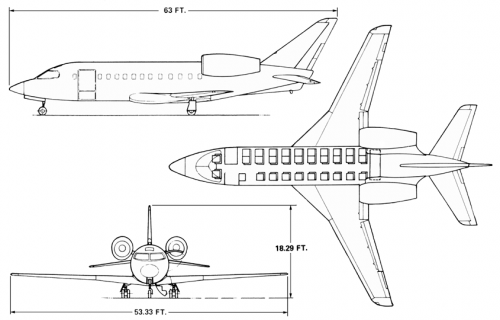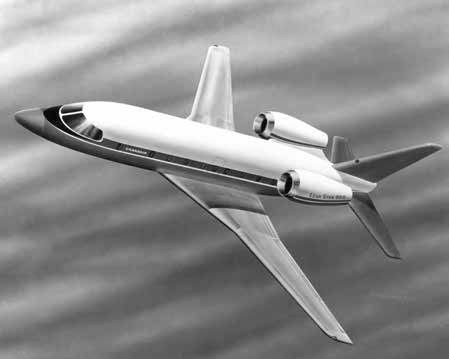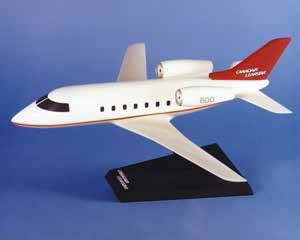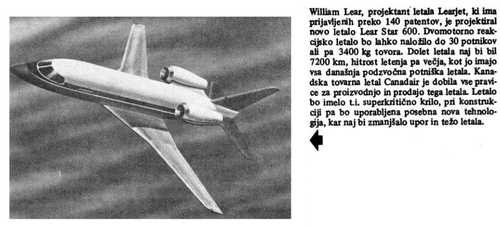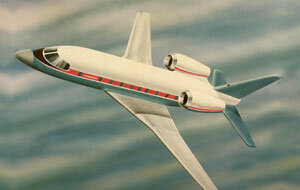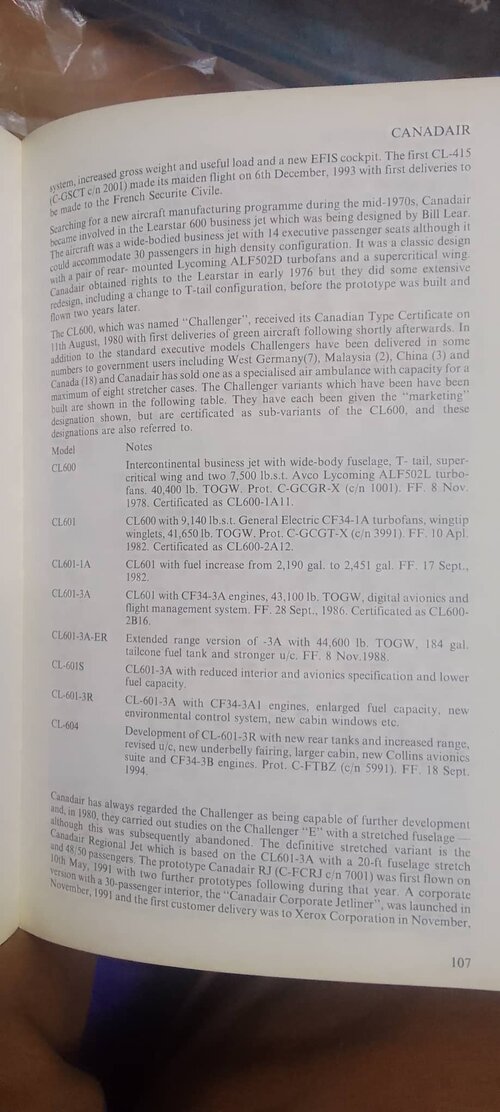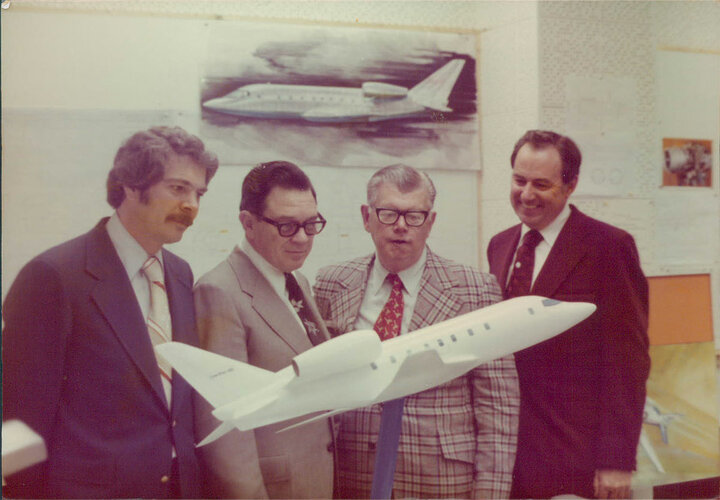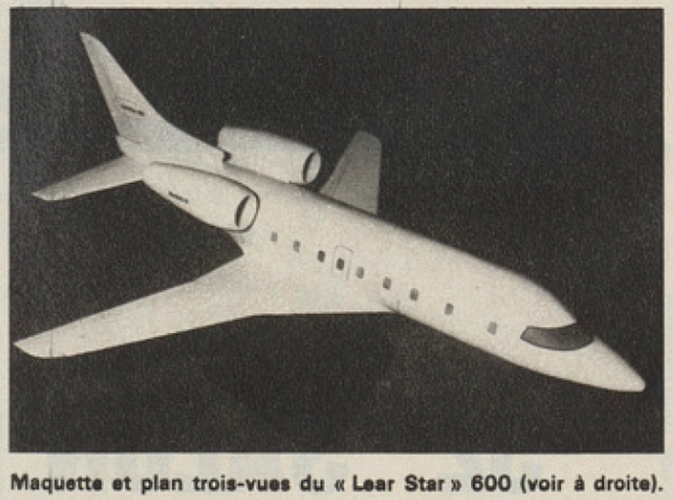Canadair LearStar 600
Although the Lear name, and his reputation as a prodigious inventor, was world renowned, he had not amassed the wealth necessary to launch, on his own, another completely new aircraft design. Also, his small manufacturing facility, then located in Reno, Nevada, lacked the space and capability to perform such a task. Financial backing was essential to his endeavor, however, with the aviation recession in full swing during the mid-1970s, he could not find anyone in the American aviation community who would risk taking on the final design, engineering and fabrication of his new business jet that he called, again, the LearStar.
Spearheaded by company President Fred Kearns and Executive Vice-President Harry Halton, Canadair decided to join forces with Lear to complete his new venture. Lear had a somewhat steadfast idea of what he wanted built, however, over the course of many meetings, his design was seen to be impracticable and not far-reaching enough to corner a niche in the civil aircraft market. Methodically, Canadair changed the design to such an extent that it became, virtually an innovative, wide-bodied airframe incorporating new supercritical wing technology, new avionics, and new engines, to be constructed to tough new certification standards. It appeared, at times hauntingly familiar, that the lessons of Avro’s failed CF-105 Arrow interceptor project, some twenty years earlier, had not been learned as Canadair struggled with the monumental tasks of designing, building and selling the new LearStar design.
In April 1976, Canadair acquired the worldwide, exclusive rights to develop, market and manufacture Lear’s original LearStar 600 business jet. The initial aircraft design was offered in three variants – the primary high-speed (Mach 0.85), non-stop long range 7,240 km (4,500 miles) executive version that could seat 14 passengers, or a commuter airline version that could carry up to 30 passengers in a 2-1 seating arrangement. In an air freight role, the aircraft would be capable of accommodating nine containers with 3,400 kg (7,500 lbs) of cargo loaded via the front combo cargo/passenger entry door. By August, the initial design configuration was decided upon, pending the results of extensive wind tunnel testing.
This is only part of the entire Canadair CL-600 Challenger development story.
You can download the entire publication from here:
http://documents.techno-science.ca/documents/CASM-Aircrafthistories-CanadairCL-600Challenger.pdf
Captions:
1. CANADAIR LEARSTAR 600 (Commuter version)
2. This artist’s concept of the Canadair Lear Star 600 in flight appeared in April 1976 with the ‘Lear Star’ brand seen as separate words. The main door is large for passenger and cargo loading and the many cabin windows would soon be reduced in number. Note also the wrap-around two-piece windscreen.
3. Desktop model of the Canadair LearStar (now all one word) 600 from November 1976, is painted in Canadair’s proposed bright new house colour scheme. A dorsal ram air scoop has been added at the base of the tail and the number of cabin windows has been reduced. The two-piece windscreen was still part of the design.

